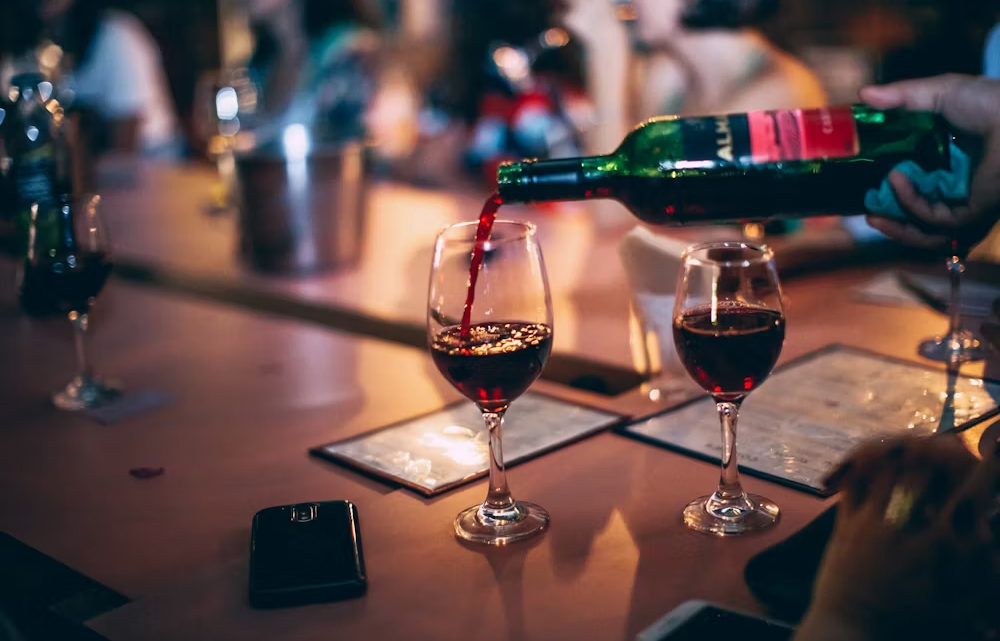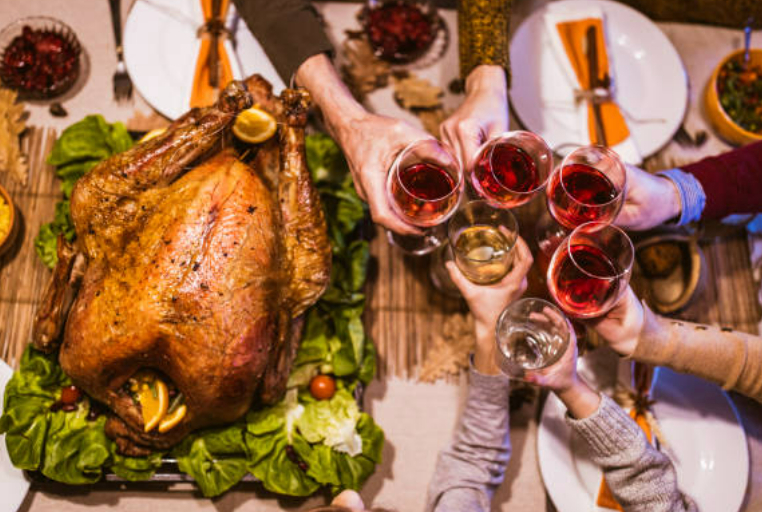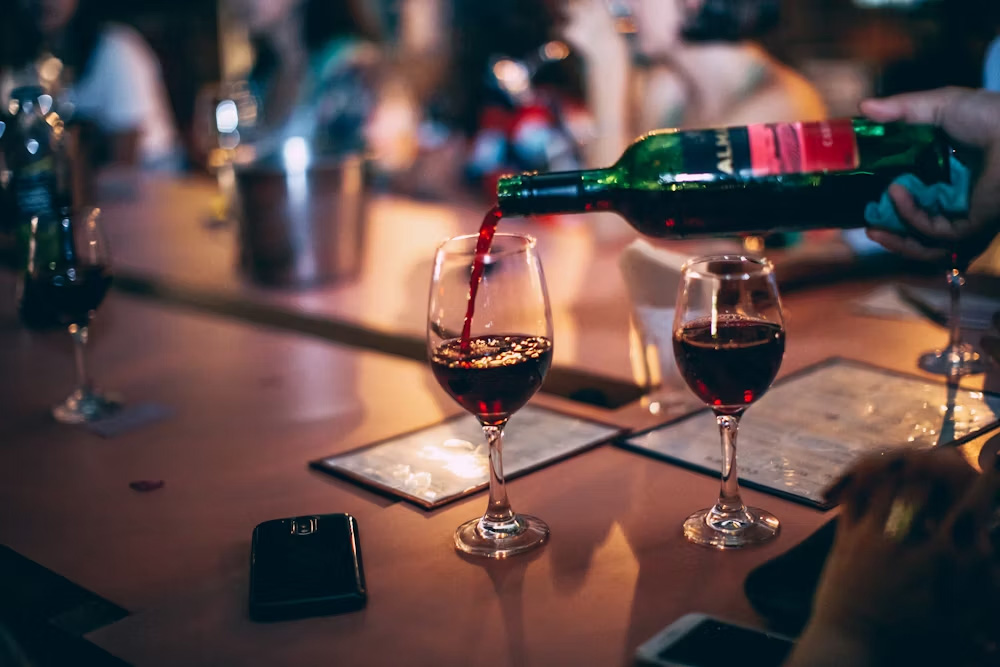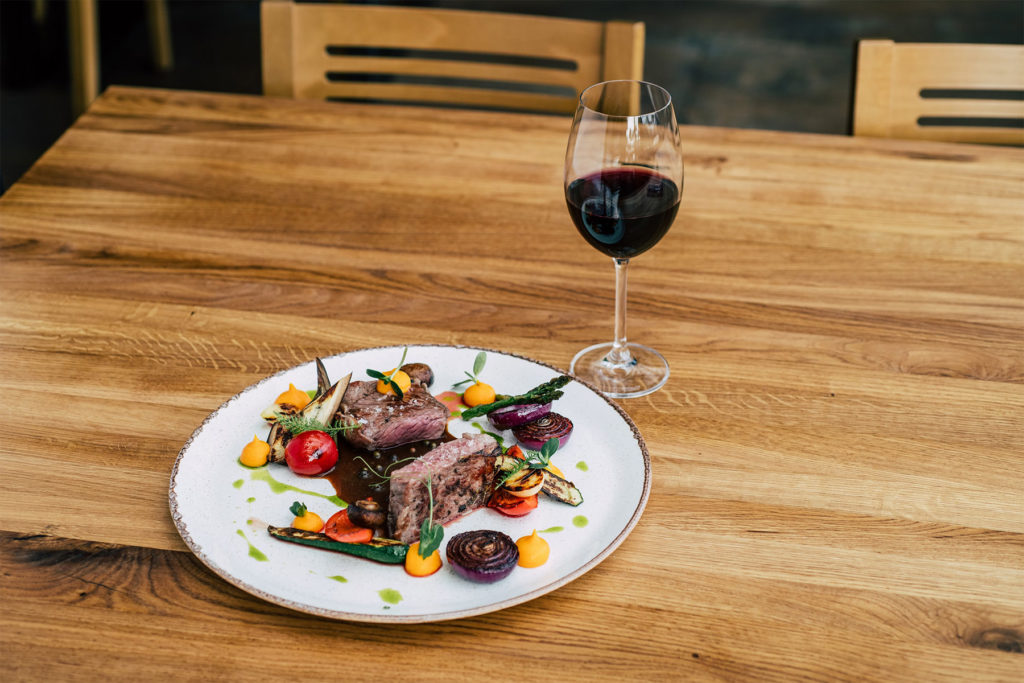
Which red wine to choose with a red or white meat dish?
Discover which red wines to choose with your red or white meat dishes, with recommendations from Bordeaux to the Loire for all budgets.
Matching food and wine is essential to optimising the taste experience. The right pairing can enhance a meal, bringing out the flavours of both the food and the wine. The aim of this article is to provide practical information on which red wines to choose to match with red and white meats. We will analyse the types of wine recommended with different cuts of meat and suggest specific domains, taking into account different price ranges.

The basics of food and wine matching
Understanding flavours and textures
Food and wine pairing is based on a precise understanding of the flavours and textures of each component. Red and white meats have specific characteristics that influence their pairing with wines.
Red meats, such as beef and lamb, are often rich and flavoursome. They require wines with structured tannins and balanced acidity to offset their intensity. Robust wines, such as those from Bordeaux, go well with these meats because of their firm tannins and complex aromas of black fruit and spices.
White meats, such as chicken and veal, are more delicate and lighter in flavour. They are best paired with more subtle, fruity wines, such as Pinot Noir or Loire wines. These wines generally have a refreshing acidity and red fruit aromas that complement the tender texture of white meats.
Concrete examples:
- A grilled rib-eye steak pairs well with a Bordeaux Saint-Émilion, due to its firm tannins and blackcurrant aromas.
- Roast chicken goes well with a Burgundy Pinot Noir, thanks to its cherry aromas and light acidity.
General rules for wine and meat pairings
There are some basic principles for successful wine and food pairing.
Balance the intensity of flavours :
- An intense red meat should be paired with a powerful wine.
- Delicate white meat requires a lighter wine.
Contrast textures:
- Tannic wines soften fatty meats.
- Acidic wines balance rich, creamy dishes.
Harmonise flavours:
- The fruity aromas of wines complement the sweet flavours of meats.
- The spicy notes in wines add complexity to spicy dishes.
Concrete examples:
- Roast lamb with herbs goes well with a Châteauneuf-du-Pape, whose aromas of spices and black fruits enrich the dish.
- Veal in cream sauce goes well with a Saumur-Champigny, offering a refreshing acidity that balances the richness of the cream.
Red meats and their characteristics
Beef
Beef is a rich and flavoursome red meat, often appreciated for its different cuts, which vary in tenderness and taste. Cuts such as fillet or rib steak are tender and have a strong flavour, ideal for robust wines. A grilled rib of beef, for example, benefits from a wine with firm, well-structured tannins.
Lamb
Lamb has a distinct, slightly herbaceous flavour, especially when prepared with aromatic herbs. This tender, juicy meat requires wines with a certain complexity and spicy or fruity notes to balance its aromas.
Game
Game, such as venison or wild boar, has an intense and often more musky flavour. This meat requires powerful, complex wines that can support its strong, sometimes earthy aromas. Wines with pronounced tannins and ripe fruit aromas are often the best choice.

Choosing a Bordeaux for beef
Types of Bordeaux (Saint-Émilion, Médoc)
Bordeaux is renowned for its powerful, tannic red wines, which are particularly well-suited to red meat. Saint-Émilion, produced mainly from Merlot, offers black fruit aromas and a softer tannic structure, while Médoc, often dominated by Cabernet Sauvignon, has firmer tannins and notes of blackcurrant and cedar.
Recommended estates (Château Margaux, Château Latour)
- Château Margaux (Médoc): A grand cru classé offering wines of great complexity, with aromas of black fruit, truffles and a long finish. Price: around €250-300 per bottle.
- Château Latour (Pauillac, Médoc): Known for its intense, structured wines, with firm tannins and notes of blackcurrant and cedar. Price: around €400-500 a bottle.
Price ranges
For more affordable options:
- Château La Tour de By (Médoc): A structured wine with black fruit and spice aromas. Price: around €20-30 a bottle.
- Château Fonplégade (Saint-Émilion): A fruity wine with supple tannins. Price: around €40-50 a bottle.
Côte du Rhône for lamb
Types of Côte du Rhône (Châteauneuf-du-Pape, Côte-Rôtie)
Wines from the Rhône Valley region are rich and spicy, perfect for lamb. Châteauneuf-du-Pape, often a blend of several grape varieties, offers aromas of red fruit, spices and a moderate tannic structure. Côte-Rôtie, dominated by Syrah, has notes of black fruit, pepper and violets.
Recommended estates (Domaine de la Janasse, E. Guigal)
- Domaine de la Janasse (Châteauneuf-du-Pape): Renowned for its balanced, aromatic wines, with notes of black cherry and pepper. Price: around €45-60 a bottle.
- E. Guigal (Côte-Rôtie): Producing wines with great aromatic complexity, combining black fruits, spices and a floral touch. Price: around €50-80 per bottle.
Price ranges
For more affordable options :
- Domaine des Bosquets (Gigondas): A wine with aromas of red fruits and spices. Price: around €20-30 a bottle.
- Les Vins de Vienne (Côtes-du-Rhône): Offering fruity and spicy wines. Price: around €10-15 a bottle.
A good Burgundy wine for game
Types of Burgundy (Gevrey-Chambertin, Pommard)
Burgundy wines are renowned for their elegance and complexity. Gevrey-Chambertin, made mainly from Pinot Noir grapes, has aromas of red fruit, undergrowth and a silky tannic structure. Pommard, also made from Pinot Noir, is more robust, with notes of black cherry, leather and earth.
Recommended estates (Domaine Armand Rousseau, Domaine de la Romanée-Conti)
- Domaine Armand Rousseau (Gevrey-Chambertin): Known for its complex, elegant wines, with red fruit aromas and a silky texture. Price: around €150-200 per bottle.
- Domaine de la Romanée-Conti (Romanée-Conti): One of the most prestigious estates, producing wines of exceptional finesse, with aromas of red fruit, spice and a long finish. Price: around €1,000-1500 a bottle.
Price ranges
For more affordable options:
- Domaine Joseph Voillot (Pommard): Offering wines with firm tannins and black fruit aromas. Price: around €40-60 a bottle.
- Domaine Faiveley (Mercurey): A fruity, well-balanced wine with cherry notes and good structure. Price: around €25-35 a bottle.

White meats and their characteristics
Chicken
Chicken is a tender, low-fat white meat, often cooked in such a way as to preserve its natural sweetness. Its neutrality makes it an ideal base for many dishes and allows for a variety of pairings. The delicate flavours of chicken go well with fruity, slightly acidic wines, which do not dominate but subtly complement the dish.
Veal
Veal is a tender, slightly sweet white meat, often cooked with rich, creamy sauces. The fine texture and mild flavour of veal call for wines with good acidity and supple tannins, capable of balancing the rich elements of the dish.
Pork
Pork, with its different cuts and cooking methods, offers a range of flavours from delicate to rich. Grilled pork chops or roast pork require wines that can bring a certain freshness to balance the richness of the meat, while complementing its mild, slightly fatty flavours.
Choosing a Pinot Noir for chicken
Types of Pinot Noir (Alsace, Burgundy)
Pinot Noir is a versatile grape variety, producing light to medium-bodied wines with red fruit aromas and good acidity. In Alsace, Pinot Noir tends to be lighter and fruitier, with notes of cherry and raspberry. In Burgundy, Pinot Noir is more complex and structured, with aromas of black cherry, earth and undergrowth.
Recommended estates (Domaine Weinbach, Domaine Faiveley)
- Domaine Weinbach (Alsace): Known for its elegant, fruity wines with cherry notes and good freshness. Price: around €25-35 per bottle.
- Domaine Faiveley (Burgundy): Producing Pinot Noir wines with a balanced structure, red fruit aromas and subtle complexity. Price: around €30-50 per bottle.
Price ranges
For more affordable options:
- Domaine Paul Blanck (Alsace): Offering light, fruity wines that are perfect with chicken. Price: around €15-20 a bottle.
- Domaine Bouchard Père & Fils (Burgundy): Offering accessible wines with red fruit aromas and balanced acidity. Price: around €20-30 a bottle.
A Loire wine for veal
Types of Loire wines (Saumur-Champigny, Chinon)
The red wines of the Loire, mainly based on Cabernet Franc, are light to medium-bodied with aromas of red fruit, herbaceous notes and good acidity. Saumur-Champigny is known for its aromas of raspberry, green pepper and lively freshness. Chinon offers notes of red fruit, earth and a more pronounced tannic structure.
Recommended estates (Domaine des Roches Neuves, Domaine Couly-Dutheil)
- Domaine des Roches Neuves (Saumur-Champigny): Renowned for its fresh, fruity wines, with notes of raspberry and a silky texture. Price: around €20-30 a bottle.
- Domaine Couly-Dutheil (Chinon): Known for its structured wines with red fruit aromas and supple tannins. Price: around €15-25 per bottle.
Price ranges
For more affordable options:
- Domaine de la Noblaie (Chinon): Offering fresh, fruity wines that are perfect with veal. Price: around €10-15 a bottle.
- Château de Villeneuve (Saumur-Champigny): Offering elegant, accessible wines with red fruit aromas. Price: around €15-20 a bottle.
Perfect with pork
Beaujolais wines (Morgon, Fleurie)
Beaujolais wines, mainly made from the Gamay grape, are known for their fruitiness and lightness. Morgon is more structured, with cherry and plum aromas and a certain minerality. Fleurie is lighter and more floral, with red fruit aromas and a soft texture.
Recommended estates (Domaine Marcel Lapierre, Domaine Jean Foillard)
- Domaine Marcel Lapierre (Morgon): Renowned for its natural wines with black cherry aromas, lovely minerality and fine structure. Price: around €25-35 per bottle.
- Domaine Jean Foillard (Morgon): Known for its balanced wines with red fruit notes and refreshing acidity. Price: around €25-35 per bottle.
Price ranges
For more affordable options:
- Domaine des Nugues (Beaujolais-Villages): Offering fruity, approachable wines that are perfect with pork. Price: around €10-15 a bottle.
- Château Thivin (Côte de Brouilly): Offering elegant wines with red fruit aromas and good acidity. Price: around €15-20 a bottle.
Practical tips for choosing your wine
Reading labels
Reading wine labels is crucial to making an informed choice. Key information to look for includes the grape variety, the region, the vintage and the name of the producer. For example, a label saying “Pinot Noir, Bourgogne, 2018, Domaine Faiveley” provides information on the grape variety (Pinot Noir), the region (Bourgogne), the year of production (2018), and the producer (Domaine Faiveley). These details help us to anticipate the wine’s taste profile and its compatibility with certain dishes.
Consult reviews
Wine opinions and reviews can provide valuable information about the quality and character of a wine. Specialist sites such as Vivino, Wine Spectator and Robert Parker offer detailed ratings and descriptions. For example, a wine rated 90/100 on Wine Spectator with comments mentioning red fruit aromas and supple tannins may be a good choice to accompany white meat.
Buy online vs. in shop
Buying wine online
Buying wine online has a number of advantages, including greater variety and often more competitive prices. Specialist sites offer filters to refine searches by grape variety, region and price range. What’s more, online platforms allow you to read consumer reviews and consult detailed technical data sheets.
Buying in-store
Buying in-store allows you to benefit from personalised advice from wine merchants. These professionals can recommend wines to suit your tastes and the dishes you are planning. What’s more, some shops offer tastings, giving you the chance to taste before you buy.
Price comparison
- Online, a Burgundy Pinot Noir like Domaine Faiveley 2018 can be found for around €30-35.
- In shop, the same wine could be slightly more expensive, around €35-40, due to running costs.
Additional tips
Storage and conservation: It is important to store wine in the right conditions to preserve its qualities. Store bottles at a constant temperature of 12-15°C, away from light and excessive humidity.
Buying in large quantities: For special events, buying in large quantities can be advantageous. Many sellers offer discounts for purchases by the case, which saves money while ensuring uniformity of quality.